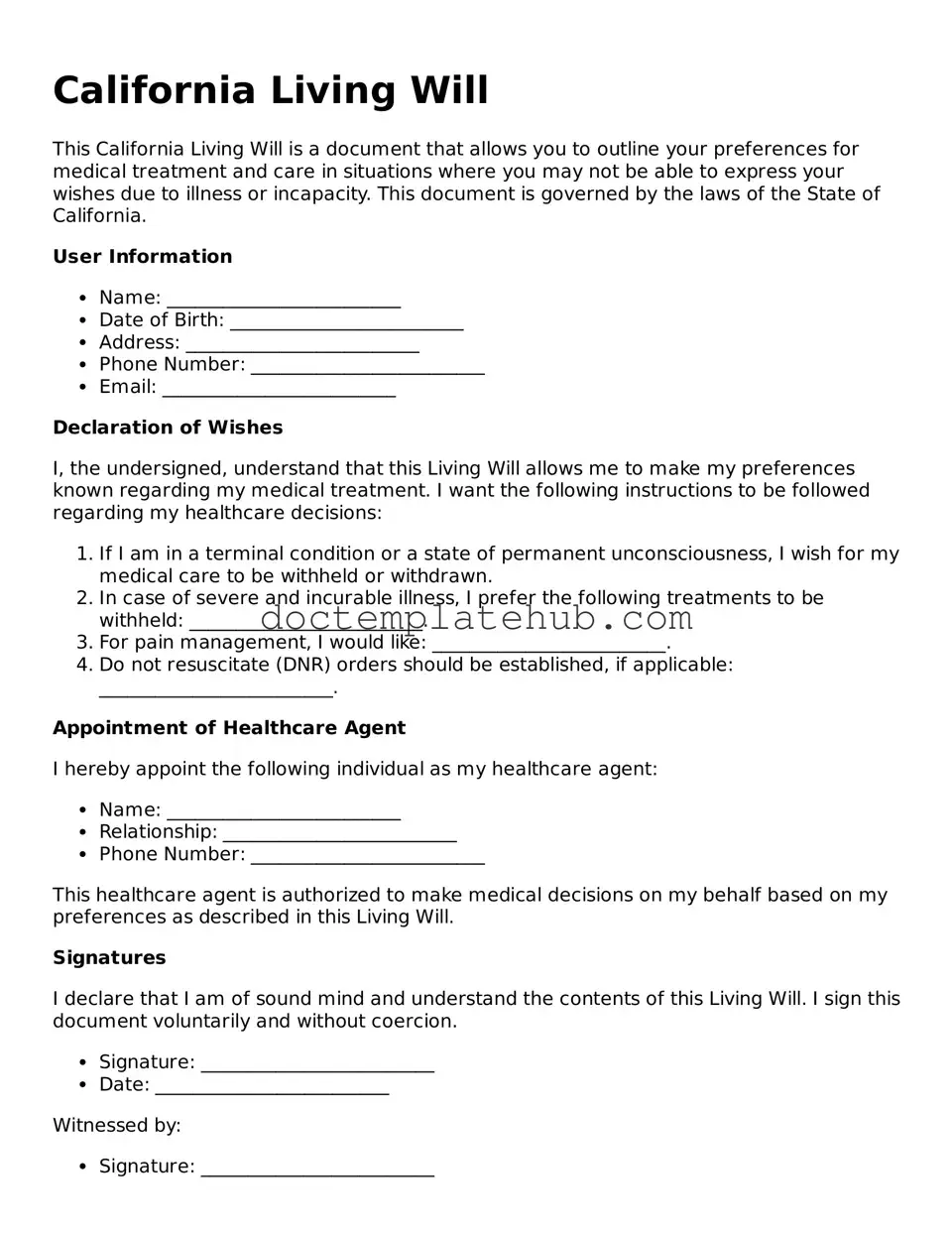What is a California Living Will?
A California Living Will is a legal document that allows you to outline your preferences for medical treatment in case you become unable to communicate your wishes. This document specifies the types of medical care you do or do not want, particularly at the end of life. It serves as a guide for your healthcare providers and loved ones, ensuring your wishes are respected when you cannot express them yourself.
How do I create a Living Will in California?
To create a Living Will in California, you need to fill out a specific form that complies with state laws. You can obtain this form online or through legal offices. After completing the form, you must sign it in front of a notary public or witnesses, depending on the requirements. It’s crucial to discuss your wishes with your family and healthcare providers to ensure everyone understands your preferences.
Who should have a copy of my Living Will?
It’s important to share copies of your Living Will with several key people. First, give a copy to your primary healthcare provider. They need to know your wishes to provide appropriate care. Next, share it with family members and anyone else who may be involved in your healthcare decisions. Keeping a copy in a safe place where it can be easily accessed is also a good idea.
Can I change or revoke my Living Will?
Yes, you can change or revoke your Living Will at any time, as long as you are mentally competent. To make changes, simply create a new Living Will that reflects your updated preferences. Make sure to notify anyone who has a copy of the old document so they can discard it. If you decide to revoke it entirely, you can do so verbally or in writing, but it’s best to document your decision.
What happens if I don’t have a Living Will?
If you don’t have a Living Will, your healthcare providers will typically follow standard medical protocols, but they may not know your personal wishes regarding treatment. This can lead to difficult decisions for your family during a challenging time. Without your guidance, loved ones may face uncertainty about what you would have wanted, potentially leading to conflicts or stress.
Is a Living Will the same as a Durable Power of Attorney for Healthcare?
No, a Living Will and a Durable Power of Attorney for Healthcare are different documents. A Living Will focuses on your medical treatment preferences, while a Durable Power of Attorney for Healthcare allows you to designate someone to make healthcare decisions on your behalf if you are unable to do so. It is often advisable to have both documents to ensure comprehensive coverage of your healthcare wishes.
